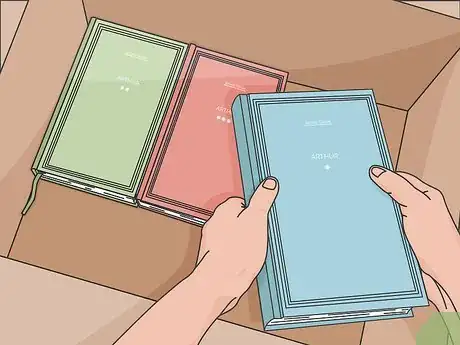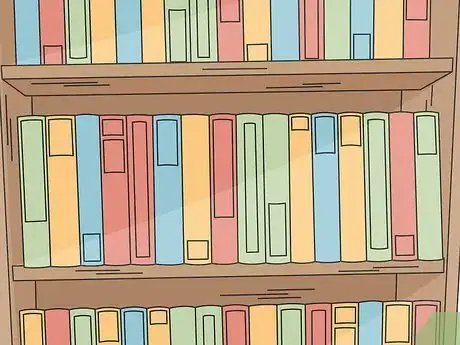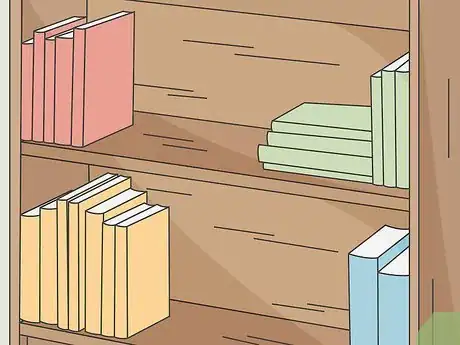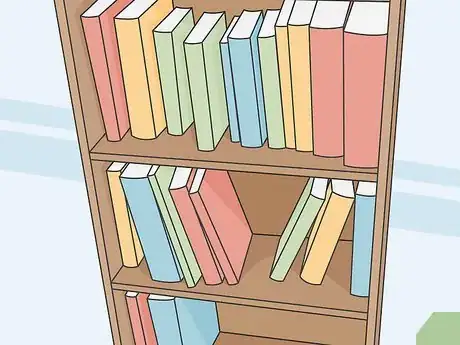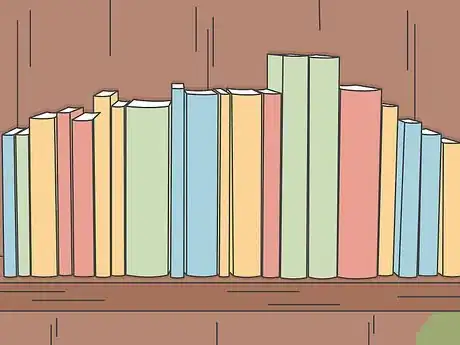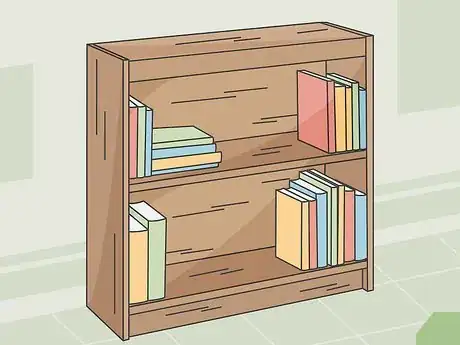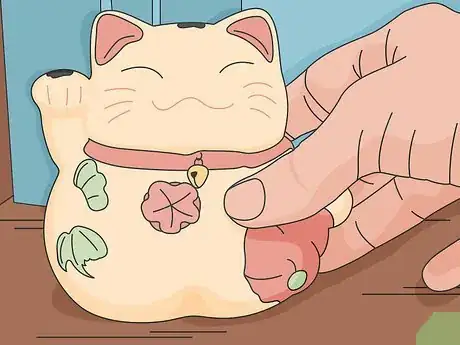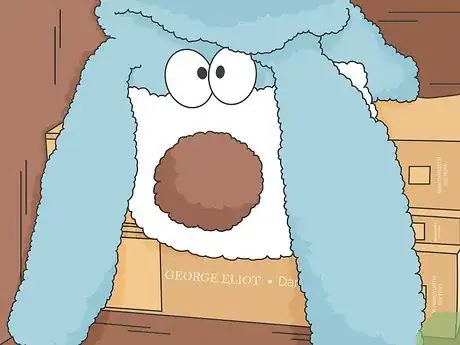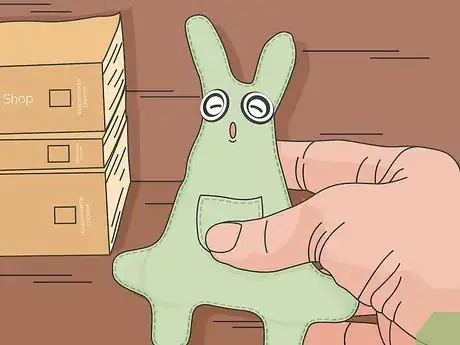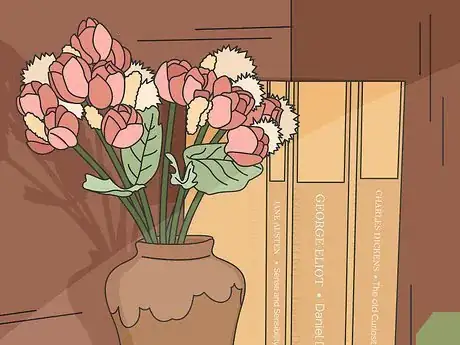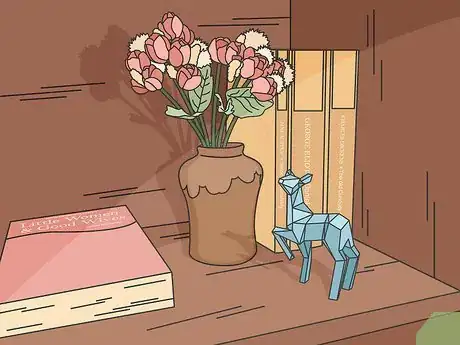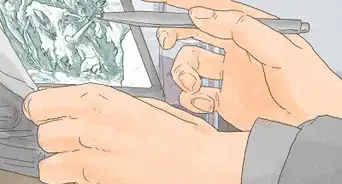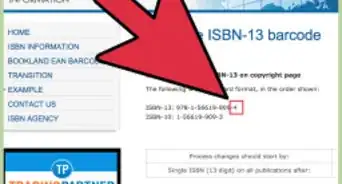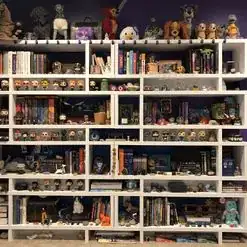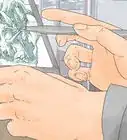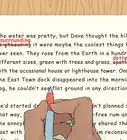This article was co-authored by Priscilla Bettencourt. Priscilla Bettencourt is an Home Stager, Interior Designer, and the Founder of Halcyon Home Staging + Design, a home staging business based in San Francisco, California. Halcyon specializes in expansive staging services geared to maximize a property's resale value and transform any home into an inviting environment for potential buyers. Halcyon has received the “Best of Houzz Service” Award in 2017, 2018, 2019, and 2020.
wikiHow marks an article as reader-approved once it receives enough positive feedback. In this case, 90% of readers who voted found the article helpful, earning it our reader-approved status.
This article has been viewed 207,388 times.
Organizing a bookshelf can be fun, either for your librarian side or your inner interior decorator. There are several go-to methods for sorting books, but quite a few alternatives let you experiment with appearance and function.
Steps
Organizing Books
-
1Give away unwanted books. It's easiest to part with books before you organize the whole collection. Box away books you'll never read again, or that you'll never get around to. You can sell these or give them away at used bookstores, charity stores, libraries, or websites such as Book Mooch or Book Scouter.[1]
-
2Check for size restrictions. Before you construct a master plan, make sure you know the limitations. Some bookcases have shelves of different spacing, which may require keeping paperbacks on one shelf and hardbacks on another. Textbooks or coffee table art books may need to be stacked flat in order to fit. Divide your books to fit these restrictions, and treat each pile as a separate organization task.
- Large, heavy books should be shelved on sturdy shelves, usually the lowest one. Do not shelve them above head height.
Advertisement -
3Divide into fiction and nonfiction. Take all the books off their shelves and place them into fiction and nonfiction piles. You're usually in the mood for one or the other, so this makes it easy to browse for an impromptu read.[2]
-
4Sort fiction by genre or author. Divide a large, varied fiction collection by genre, keeping each one on a separate shelf or group of shelves. Within each genre, sort alphabetically by author's last name. If you only have two or three shelves of fiction, or most of your fiction is in the same genre, sort by last name without dividing them.
- Common fiction genres include mystery, literary, young adult, fantasy, and science fiction.
-
5Sort nonfiction by topic. Sort your nonfiction books into separate stacks by topic. Get a feel for how much you have in each category. Ideally, you'll want about 1–3 shelves in each category. You may need to think of broader or narrower topics to achieve this.
- There are many broad nonfiction topics, including gardening, cooking, history, biography, biology, and reference books.
- A specialized collection can be sorted with many subtopics. For instance, a history collection can be divided by continent, then country, then time period.
- If your home has more nonfiction than your local library, use the Dewey Decimal system.
Alternate Organization Systems
-
1Sort by size. Consider this if you have books ranging from trade paperbacks to oversize art albums. Place the tallest books on the lowest shelf, placing smaller and smaller books as you move upward. This creates a tidy, organized appearance. On some bookcases, this is a necessity to adapt to the height of each shelf.
-
2Place books based on color. This system looks great, but are best used if you have only one bookcase. In larger collections, they can make a book difficult to find. In addition, you need to consider that you may have to split books from a series, when they do not have the same colour. Here are a few sorting systems based on spine color:
- One color per shelf (a blue shelf, a green shelf, and so on). If you're having trouble filling a shelf, wrap some of the books in kraft paper.[3]
- A gradual "rainbow" flowing from one color to the next, or from the most saturated colors to pastels.
- A pattern that creates a flag or other simple image when the whole bookcase is filled. This is time-consuming, but impressive.
-
3Arrange by frequency of use. This is a great system if you consult your books frequently for research or reference. Keep the ones you use daily on the shelf at eye height. and a couple shelves below, where you can easily see and reach them. Books you only use occasionally go on the lowest shelves. Books that you almost never open go on the shelves above your head.
- If you have enough books to fill two or three bookcases, fill the most visible bookcase with the important books. If you have an even larger collection, this system may not work well.
-
4Divide based on your reading plans. If you have a large number of books you'd like to read, why not give them their own shelf? Keep an empty shelf on the same bookcase so you can slot the finished books back easily. You might want to revisit your organization once you're through your reading list, but this can be convenient in the meantime.
-
5Create a chronology of your life. Fill the top shelf with books you read in early childhood, and move down adding books in the rough order you discovered them.[4] This one works best for books with strong associated memories – and for people with strong memories as well.
-
6Reserve a shelf for your favorites. No matter which system you chose, you have the option of leaving one special shelf. Usually the most visible one, this is where you keep your first editions, your signed copies, or the books that have changed your life.
Arranging Stylish Bookshelves
-
1Create a dark backdrop (optional). The bookcase will look more striking if the backdrop is darker than the surrounding walls and shelves. Consider painting the back of the bookshelves to create this vivid effect.
- For open-backed bookshelves, hang a cloth between them and the wall.
-
2Collect possible decorations. Know what you'll be working with before you start filling the shelves. Vases, fancy tableware, figurines, trinkets, candlesticks — your house is your oyster. Gather more things than you think you'll need, so you can test more options.[5]
- Vertical, straight-lined objects look similar to the books. This creates an austere, rigid appearance. A few bowls, baskets, or other round objects lead to a friendlier atmosphere.
-
3Start with the largest objects. Set aside the largest decorative objects, and oversize books if you have them. Space these out along the bookcase, leaving plenty of space between them to create separate focal points. A zig-zag pattern works well, placing these on the left end of the first shelf, then the right end of the second, then the left end of the third.
-
4Shelve books in different orientations. Catch the eye for longer by varying the position of your books. Stack books on top of each other on some shelves, and vertically next to each other on others.[6]
- Try a pyramid of books, topped with a small trinket.
-
5Use small decorations for contrast. As you place your books, add a decorative object wherever it looks needed. Use colorful objects in contrast with drab book covers, or vice versa. A pair of tall candlesticks frames a row of short books nicely.
-
6Shore books up with heavy objects. Bookends come in handy and a variety of decorative shapes. Alternatively, you can use any heavy object to keep your books in place.
-
7Leave plenty of empty space. Gaps often look better than a shelf clogged with paperbacks and origami. This is especially important for open-backed bookcases placed in the middle of a room, which need a large amount of space to let light through.
Expert Q&A
Did you know you can get expert answers for this article?
Unlock expert answers by supporting wikiHow
-
QuestionWhat else can I put on a bookshelf to mix things up?
 Priscilla BettencourtPriscilla Bettencourt is an Home Stager, Interior Designer, and the Founder of Halcyon Home Staging + Design, a home staging business based in San Francisco, California. Halcyon specializes in expansive staging services geared to maximize a property's resale value and transform any home into an inviting environment for potential buyers. Halcyon has received the “Best of Houzz Service” Award in 2017, 2018, 2019, and 2020.
Priscilla BettencourtPriscilla Bettencourt is an Home Stager, Interior Designer, and the Founder of Halcyon Home Staging + Design, a home staging business based in San Francisco, California. Halcyon specializes in expansive staging services geared to maximize a property's resale value and transform any home into an inviting environment for potential buyers. Halcyon has received the “Best of Houzz Service” Award in 2017, 2018, 2019, and 2020.
Home Stager & Interior Designer
-
QuestionWhat if I don't have enough books to fill the shelves?
 Priscilla BettencourtPriscilla Bettencourt is an Home Stager, Interior Designer, and the Founder of Halcyon Home Staging + Design, a home staging business based in San Francisco, California. Halcyon specializes in expansive staging services geared to maximize a property's resale value and transform any home into an inviting environment for potential buyers. Halcyon has received the “Best of Houzz Service” Award in 2017, 2018, 2019, and 2020.
Priscilla BettencourtPriscilla Bettencourt is an Home Stager, Interior Designer, and the Founder of Halcyon Home Staging + Design, a home staging business based in San Francisco, California. Halcyon specializes in expansive staging services geared to maximize a property's resale value and transform any home into an inviting environment for potential buyers. Halcyon has received the “Best of Houzz Service” Award in 2017, 2018, 2019, and 2020.
Home Stager & Interior Designer
-
QuestionWhat if I have to share my shelves with my fussy sister?
 Community AnswerReason with your sister to get an even amount of shelves. Don't try and go for a decorative look unless you have only a few books.
Community AnswerReason with your sister to get an even amount of shelves. Don't try and go for a decorative look unless you have only a few books.
Warnings
- Books are heavier than they look. Don't pick up stacks that are too heavy for you to comfortably carry. Lift with your knees, keeping your back straight, to avoid injury.⧼thumbs_response⧽
References
- ↑ https://www.nbcnews.com/better/lifestyle/better-way-organize-style-your-book-shelves-ncna1045771
- ↑ https://www.nbcnews.com/better/lifestyle/better-way-organize-style-your-book-shelves-ncna1045771
- ↑ https://www.apartmenttherapy.com/organizing-books-136728
- ↑ https://www.apartmenttherapy.com/organizing-books-136728
- ↑ https://www.bhg.com/decorating/storage/shelves/get-picture-perfect-bookshelves/?slide=slide_d315a9cf-550b-445d-abe5-f631b5c4e6c9#slide_d315a9cf-550b-445d-abe5-f631b5c4e6c9
- ↑ https://www.bhg.com/decorating/storage/shelves/get-picture-perfect-bookshelves/?slide=slide_e2b5098f-742f-4aa7-b33a-af7afaaf868f#slide_e2b5098f-742f-4aa7-b33a-af7afaaf868f
About This Article
To organize a bookshelf, try organizing it by size, with the tallest books on the bottom and the shortest books on the top. Alternatively, you can make a fiction and a nonfiction pile, and sort your fiction books by author or genre and your nonfiction books by topic. Or, you can sort your books from largest to smallest, by color, or by frequency of use. To learn how to decorate a bookshelf, scroll down!
